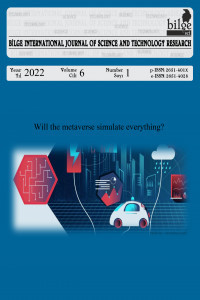Numerical Computation of Fission-Product Poisoning Build-up and Burn-up Rate in a Finite Cylindrical Nuclear Reactor Core
Numerical Computation of Fission-Product Poisoning Build-up and Burn-up Rate in a Finite Cylindrical Nuclear Reactor Core
Numerical computation Cylindrical reactor core, Fission-Products poisoning, Neutron diffusion equation, Samarium-149, Xenon-135,
___
- Arshad, M. (1994). Study Of Xenon And Samarıum behavıour in the LEU Parr-1 Cores. Pakistan: Nuclear Engineering Division, Pakistan Institute of Nuclear Science & Technology, 4(28), pp. 1-21.
- Briesmeister, J. F. (1993). MCNP - A General Monte Carlo N-Particle Transport Code, Los Alamos National Laboratory, New Mexico, USA, pp. 4-12.
- Berthou, V., Degueldre, C., Magill, J. (2003). Transmutation Characteristics in Thermal and Fast Neutron Spectra: Application to Americium, Journal of Nuclear Materials, pp. 156-162.
- England, T.R., Wilson. W.B., Stamatelatos, M.G. (1976). Fission product data for thermal reactors- A data set for EPRI-CINDER using ENDF/B-IV. USA: Los Alamos Scientific Laboratory, 8(9), 81p.
- Fermi, E. (1940). Nuclear disintegrations, In: Electrical Engineering, 59(2), 57-58.
- Hermann, O. W., and Wesfall, R. M. (1998). ORIGEN-S: Scale System Module to Calculated Fuel Depletion Actinide Transmutation, Fission Product Build-up, Decay and Associated Radiation Source Terms. Tennessee, USA: Oak Ridge National Laboratory, 6(2), pp. 1-122.
- Marcum, W. and Spinrad, B. I. (2013). Nuclear reactor device, pp. 1-8. [Online]. Available: www.britannica.com/technology/nuclear-reactor
- Kord, S., and Lulu, L. (2012). Nuclear Reactor Physics, Massachusetts Institute of Technology, 372p.
- Lamarsh, J. R. (1966). Introduction to Nuclear Reactor Theory. New york: Addison-Wesley Publishing Company, pp. 255-256.
- Lamarsh, J. R. (2001). Introduction to Nuclear Reactor Theory. New york: Addison-Wesley Publishing Company, 501p.
- Lamarsh, J. R, and Baratta, A. J. (2001). Introduction to Nuclear Engineering. Newjersy: Prentice-Hall, Inc. Publishing Company, 3, pp. 272-281.
- Parma E. J. (2002). BURNCAL- A Nuclear Reactor Burnup Code Using MCNP Tallies. California: Sandia National Laboratories, pp. 3-102.
- Stacey, W. M. (2007). Nuclear Reactor Physics, New york: Wiley-VCH Publishing Company, 2, pp. 211-215.
- Yesilyurt, G., Clarno, K. T., Gauld, I. C. (2011). Modular Orıgen-S for Multı-Physıcs Code Systems. International Conference on Mathematics and Computational Methods Applied to Nuclear Science and Engineering, Rio de Janeiro, Brazil, pp. 1-14.
- ISSN: 2651-401X
- Yayın Aralığı: Yılda 2 Sayı
- Başlangıç: 2017
- Yayıncı: Kutbilge Akademisyenler Derneği
Bilal Sungur, Bahattin Topaloglu
Erkan KARACABEY, Merve Seçil TURAN
Nuraniye ERUYGUR, Özge ÇEVİK, Mehmet ATAŞ, Mehmet TEKİN
Esra Deniz GÜNER, Senem TEKİN, Galip SEÇKİN
Infrared and NMR Spectral Analyses and Computational Studies of 2-amino-3-methylbenzoic acid
Mathew Ademola Jayeola, Musbaudeen Kewulere Fasasi, Adebimpe Amos Amosun, Ayodeji Olalekan Salau, Babatunde Michael Ojo
Real-time Parental Voice Recognition System For Persons Having Impaired Hearing
Sapwood Area Related to Tree Size, Tree Age, and Leaf Area Index in Cedrus libani
